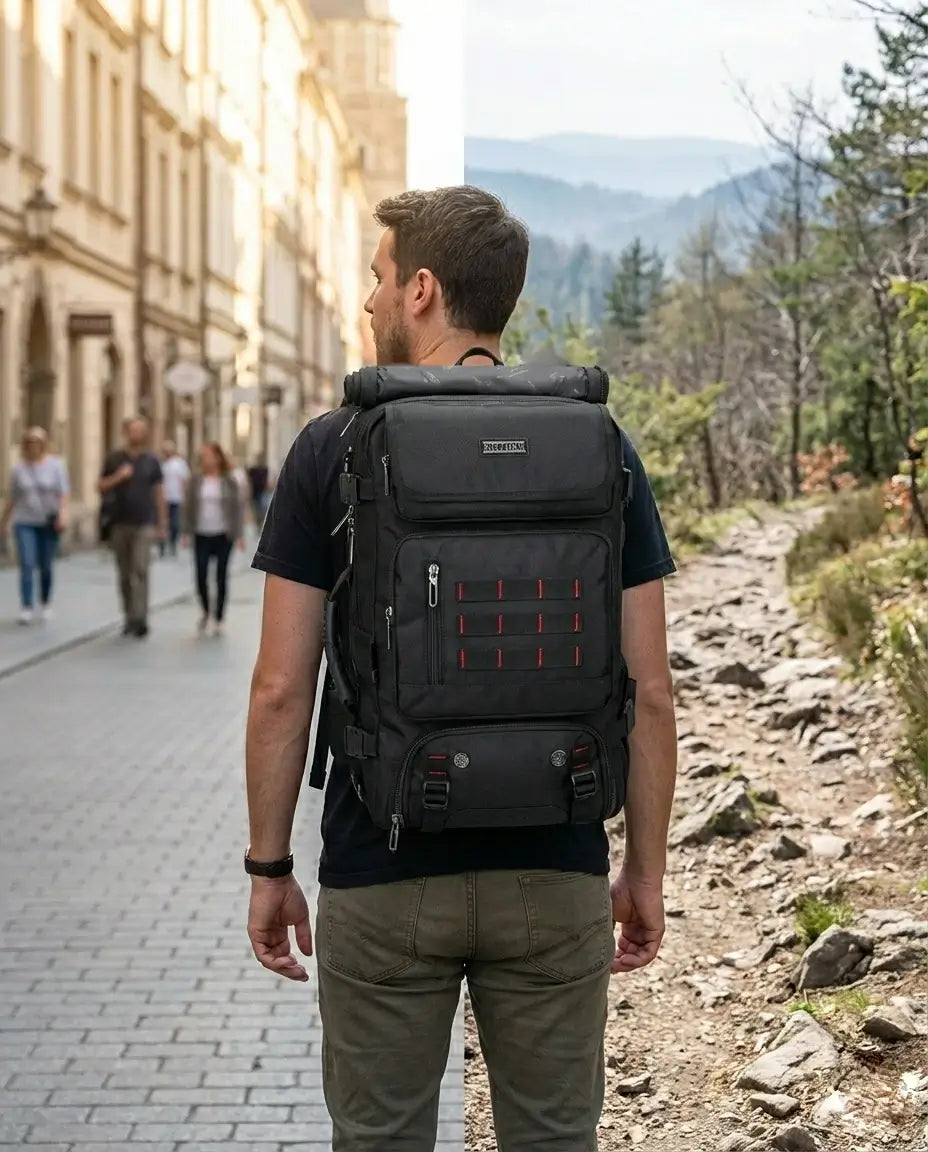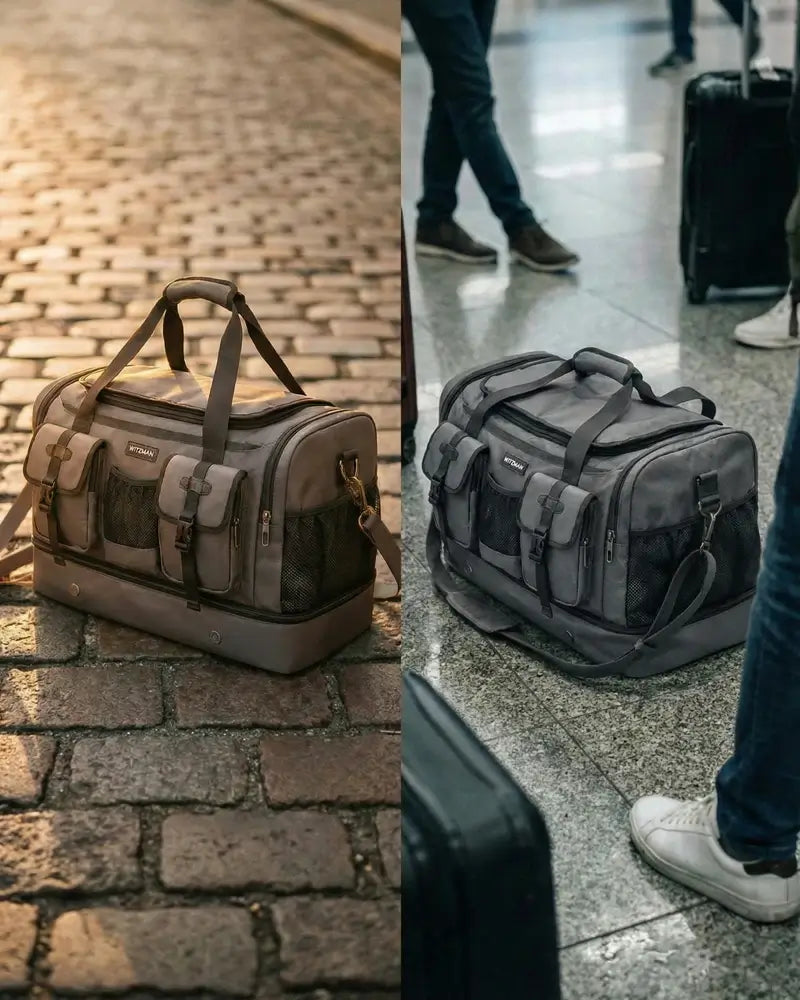Introduction
Eco-friendly travel is increasingly becoming a priority for many globetrotters. It emphasizes minimizing environmental impact, preserving natural resources, and supporting sustainable practices. One key aspect of eco-friendly travel is using sustainable backpacks. These backpacks are designed to be durable, versatile, and produced with minimal environmental impact. Additionally, choosing green travel destinations can significantly contribute to the overall goal of reducing our carbon footprint.
1. The Need for Sustainable Travel Gear
In the past decade, the travel industry has seen a growing demand for sustainable gear. Travelers are more conscious of their environmental impact and seek products that align with their eco-friendly values. Sustainable backpacks are made from materials like recycled plastics, organic cotton, and hemp, which have lower environmental footprints compared to conventional materials.
Witzman, a brand with over 20 years of experience in backpack design, primarily uses canvas and nylon. Canvas is known for its durability and vintage appeal, while nylon offers water resistance and modern aesthetics. Both materials, when used responsibly, contribute to creating long-lasting, eco-friendly products.

2. Features of Sustainable Backpacks
Sustainable backpacks are characterized by their durability, ensuring they last for many years and reduce the need for frequent replacements. They are designed to be versatile, often featuring multiple compartments and conversion options (e.g., backpack to duffel). Ergonomic designs are crucial, as they enhance comfort and reduce strain during travel.
Witzman’s canvas backpacks combine vintage aesthetics with modern functionality. They feature specialized compartments for laptops, smartphones, and other essentials, along with a 3-in-1 design that allows them to be carried as a backpack, handbag, or shoulder bag. Their nylon backpacks are lightweight, water-resistant, and include convenient features like USB charging ports, making them ideal for urban explorers (About WITZMAN).
3. Witzman Backpacks: A Closer Look
Witzman’s commitment to quality and sustainability is evident in their product lines. The brand offers a range of canvas and nylon backpacks designed to meet the needs of diverse travelers. Canvas backpacks are praised for their robustness and timeless style, while nylon backpacks appeal to those seeking modern, practical solutions.
Canvas backpacks from Witzman are perfect for outdoor adventures, featuring ample storage, ergonomic waist straps, and versatile carrying options. Nylon backpacks, on the other hand, are favored for their sleek design, durability, and functional features like water resistance and built-in USB ports. Customer reviews highlight the practical benefits and stylish appeal of Witzman backpacks, making them a popular choice among eco-conscious travelers (WITZMAN).
4. Benefits of Using Sustainable Backpacks

Sustainable backpacks offer several advantages that make them an excellent choice for eco-conscious travelers:
-
Environmental Benefits: By using materials such as recycled plastics and organic fibers, sustainable backpacks significantly reduce the environmental footprint. For instance, recycled nylon, as used by Witzman, helps in reducing waste and conserving resources. Organic cotton canvas reduces the use of pesticides and promotes healthier ecosystems (WITZMAN).
-
Health Benefits: Ergonomic designs ensure that sustainable backpacks provide better support and reduce strain on the shoulders and back. This is especially important for travelers who carry their backpacks for extended periods. Witzman’s backpacks are designed with features like padded straps and waist belts to distribute weight more evenly and improve comfort.
-
Economic Benefits: Although sustainable backpacks may have a higher initial cost, their durability and longevity make them cost-effective in the long run. Travelers save money by not needing to replace their backpacks frequently. Witzman’s commitment to quality ensures that their products last for many years, providing excellent value for money
5. Top Green Travel Destinations
Choosing eco-friendly destinations helps promote sustainable tourism and supports local conservation efforts. Here are some top green travel destinations:
-
Costa Rica: Known for its rich biodiversity and extensive network of protected areas, Costa Rica is a leader in eco-tourism. Travelers can explore rainforests, volcanoes, and pristine beaches while supporting conservation initiatives.
-
New Zealand: This country offers breathtaking landscapes and is committed to sustainability. New Zealand’s eco-friendly practices include renewable energy use and conservation of natural habitats, making it an ideal destination for green travelers.
-
Iceland: With its geothermal energy and emphasis on preserving natural beauty, Iceland is a top choice for eco-conscious tourists. Visitors can enjoy glaciers, hot springs, and volcanic landscapes while minimizing their environmental impact.
-
Bhutan: Bhutan’s commitment to Gross National Happiness includes environmental conservation as a key component. The country’s strict tourism policies ensure that visitors can experience its natural beauty without causing harm to the environment.
When choosing a green travel destination, consider factors such as the destination’s environmental policies, the availability of eco-friendly accommodations, and opportunities to participate in conservation activities.
6. Tips for Eco-Friendly Travel
Implementing eco-friendly practices while traveling can greatly reduce your environmental impact. Here are some tips:

-
Packing Essentials: Bring reusable items such as water bottles, shopping bags, and utensils to minimize waste. Witzman’s backpacks, with their multiple compartments, make it easy to organize and carry these essentials.
-
Reduce Carbon Footprint: Opt for public transportation, carpooling, or biking instead of renting a car. When flying, choose non-stop flights to reduce emissions. Consider offsetting your carbon footprint by supporting environmental projects.
-
Support Local Economies: Purchase goods and services from local businesses to support the community and reduce the carbon footprint associated with transporting goods from afar.
-
Respect Wildlife and Nature: Follow guidelines for wildlife interactions and do not disturb natural habitats. Stick to designated trails to minimize your impact on the environment.
-
Minimize Waste: Dispose of waste properly and recycle whenever possible. Avoid single-use plastics and be mindful of your consumption.
-
Stay in Eco-Friendly Accommodations: Choose hotels and lodgings that have strong environmental policies, such as energy-efficient practices, water conservation measures, and waste reduction programs.
Conclusion
Sustainable backpacks and green travel destinations are integral to eco-friendly travel. By choosing high-quality, durable products like Witzman’s canvas and nylon backpacks, travelers can significantly reduce their environmental impact while enjoying the benefits of well-designed, functional gear. Additionally, selecting eco-friendly travel destinations and practicing responsible tourism can help protect the planet for future generations. Embrace the journey of sustainable travel and make a positive impact on the world.







Share:
Travel Hacks: Making the Most of Limited Backpack Space
A Beginner’s Guide to Backpacking: Tips and Tricks